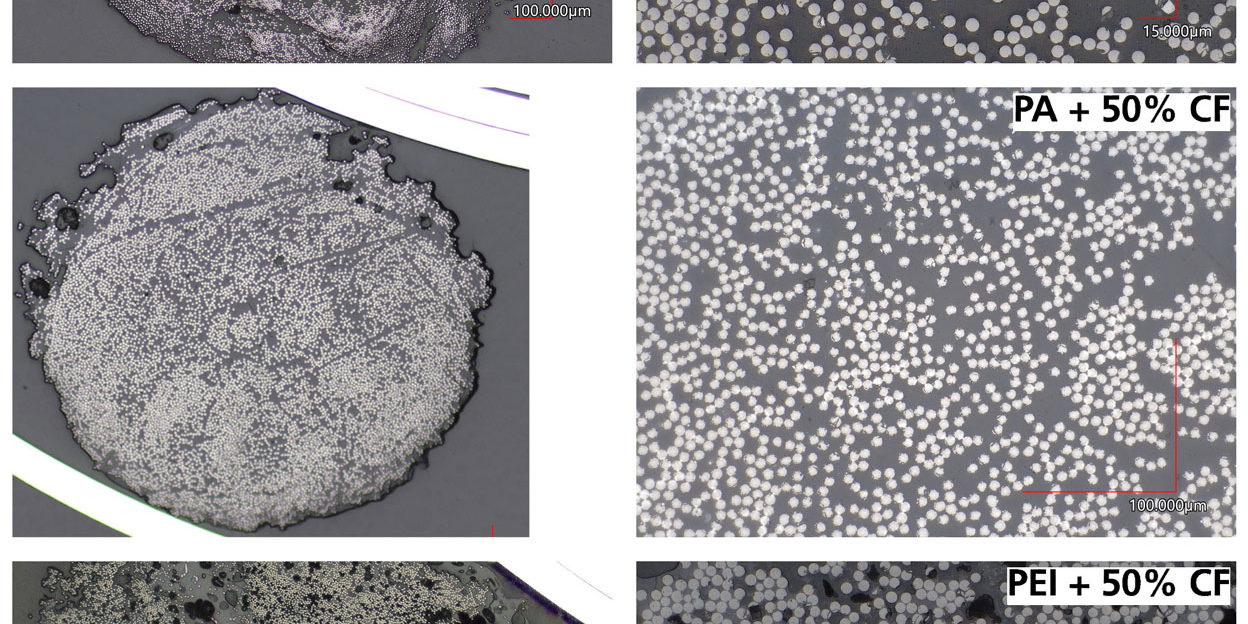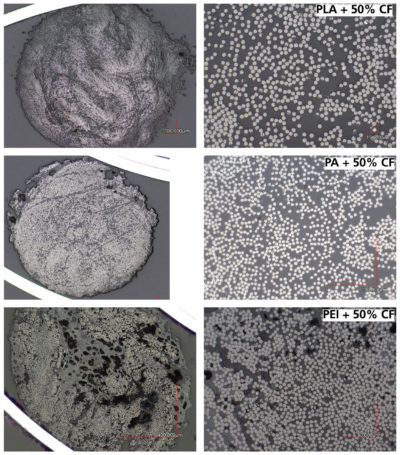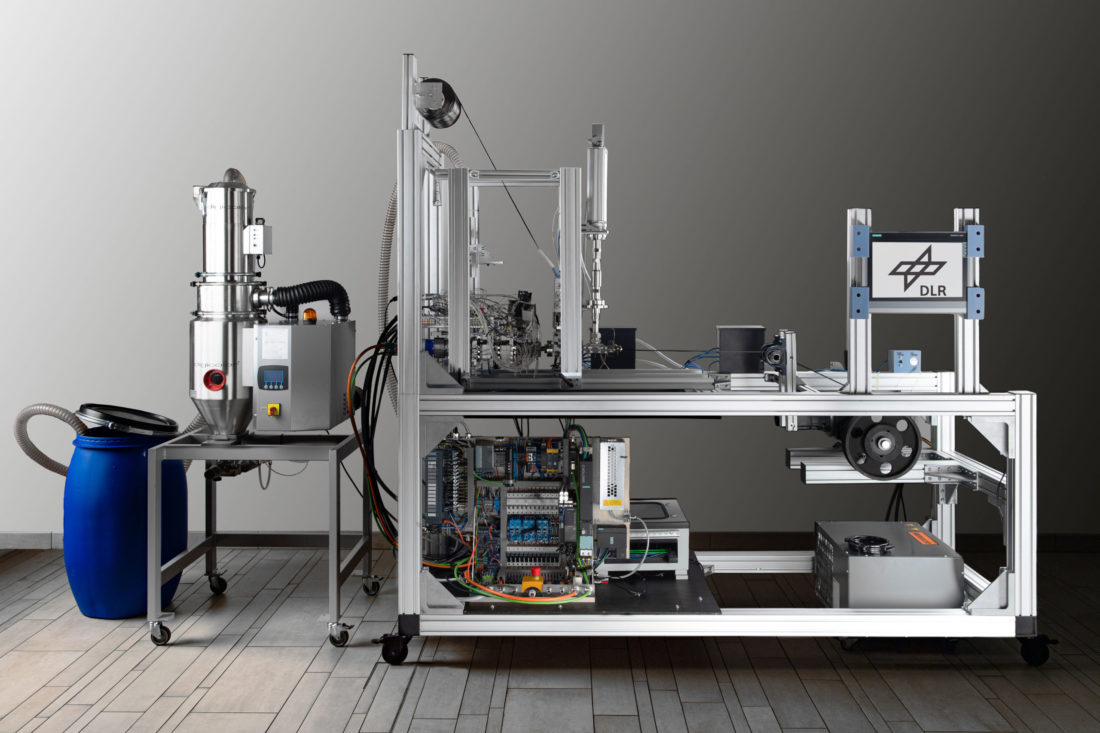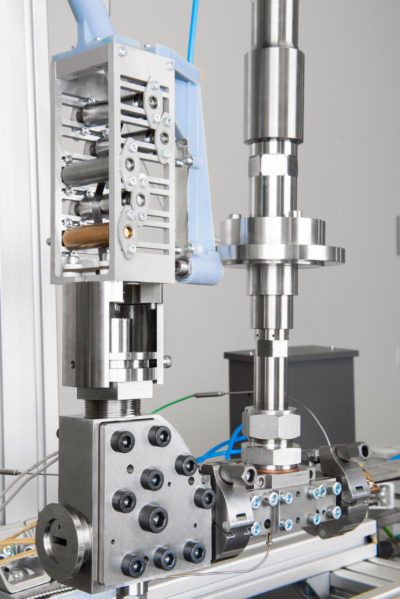A newly developed impregnation technology enables cost-effective and flexible production of continuous fibre-reinforced thermoplastic 3D printing filaments. When combined with additive material extrusion processes, this makes it possible to implement lightweight yet highly resilient components made of thermoplastic fibre composites cost-effectively, even for new businesses and manufacturers of small production runs.
Production of continuous fibre-reinforced 3D printing filaments
DLR’s new laboratory facility makes it possible to produce continuous fibre-reinforced 3D printing filaments with different fibre volume contents and fibre strengths, along with almost any fibre-thermoplastic combination. Granulate materials and fibre rovings (fibre bundles made of continuous individual filaments) are used as the starting materials, thus ensuring high flexibility and cost effectiveness. The innovation here is the direct melt impregnation with high-viscosity thermoplastics through the use of ultrasound. For this purpose, a fibre roving is first spread out. If carbon fibres are to be used, they are heated via electrical resistance using the CoRe-HeaT technology developed at DLR. An extruder melts the granulate material and creates a continuous flow of melt, into which the fibre roving is introduced in a pressure-tight process. High impregnation quality and homogeneous fibre distribution is achieved through the subsequent application of high-frequency sound waves to the melt surrounding the fibre roving. The fibre volume content is shaped and adjusted in the subsequent nozzle. This process chain is easy to integrate into a compact extrusion tool, making it a flexible option for expanding the capabilities of existing production lines for 3D printing filaments with fibre-reinforced materials.
High-performance semi-finished products for additive manufacturing
The specific advantages of additive manufacturing with continuous fibre-reinforced materials lie in the increased design freedom and significantly reduced tooling costs for lightweight structures. The highly automated additive manufacturing processes and support of the DLR Innovation Lab EmpowerAX make thermoplastic fibre composite materials accessible to newcomers to the sector. Most additive manufacturing processes work with pre-impregnated, continuous fibre-reinforced 3D printing filaments, the availability of which is currently limited. This system technology allows for a significantly expanded range of materials and reduces the cost of semi-finished products. The first batch of filaments produced from polylactide (PLA) and polyamide (PA) with a fibre volume content of 50 percent and a diameter of one millimetre exhibit excellent impregnation quality and fibre distribution. Good results have also been achieved with high-performance thermoplastics that are difficult to process, such as polyetherimide (PEI). Current research is focused on reducing the air inclusions and areas of dry fibre that remain. . The tensile strength of the filaments can reach up to 2000 megapascals.
The future of continuous fibre-reinforced filament manufacturing
The demand for continuous fibre-reinforced 3D printing filaments is constantly increasing together with the technical maturity of 3D printing processes. The flexible production process demonstrated here will enable cost-effective production of different material combinations in the future. The commissioning of an optimised design by the end of this year will increase the current production speed of 1.2 metres per minute to a line speed of at least three metres per minute and an output rate of 0.5 kilograms per hour. One key area of focus is the processing of high-performance thermoplastics. Successful transfer to existing industry partners is planned, with support from DLR Technology Marketing.










